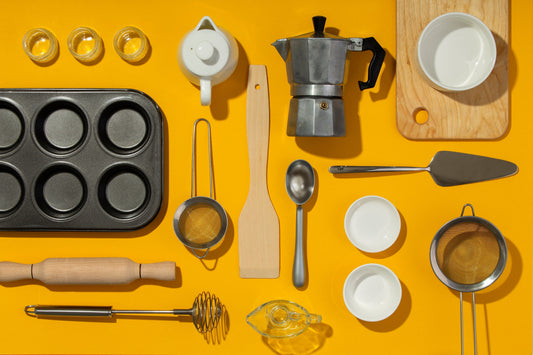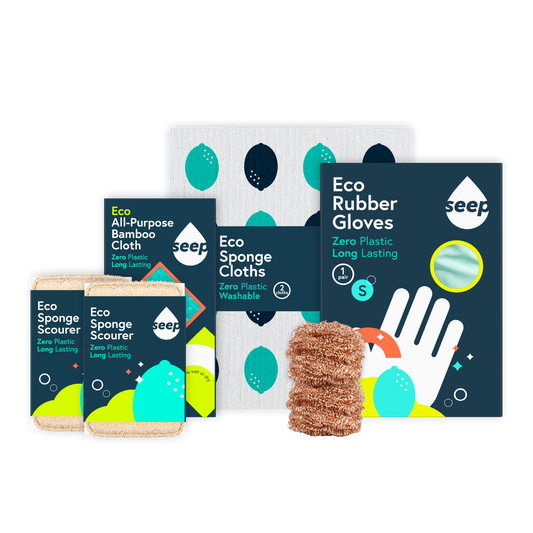
Sometimes you need to remember how to clean a burnt pan because certain blackened foods left in your pan can become a nuisance for your next culinary treat.
If you’re a foodie, and we mean a real foodie, you’ll have your cast-iron skillet ready to cook up some irresistible grub. But, more importantly, you’ll know the chef’s kiss can come from the “seasoning” and “glaze” from the meal before.
That said, it’s also vital to know how to clean a burnt saucepan because it’s time. But, being iron, it needs more elbow grease so we’ve got the ingredients and the recipe to cook up the cleanest of skillet meals.
- Why You Need to Know How to Clean a Burnt Pan
When you have charred foods on your pan, it can be a detriment to your meal and your body. Food, even if some of it has been charred, can still have traces of bacteria. And, unfortunately, given the right warm and moist environment, it will grow.
Plus, sometimes you don’t want fish-seasoned chicken. So, knowing how to clean a burnt saucepan can help you sautee the perfect dish for your family and friends. If you’re cooking for your enemies then - by all means - skip this article and head over to another Seep cleaning special.
- How Often You Should Clean Your Iron Pan
You should clean your pan after every use. However, the method of cleaning will wholly depend on what you’ve cooked, how burnt the food is and what you’ve got on the menu tomorrow.
If you’ve simply seared some burger patties without fully caking your meal to the pan, you can get away with scraping away the big crumbs and giving it a wipe with a damp cloth. Then, you can use that fantastic seasoning for tomorrow’s fajitas.
That said, you should really think about giving your cast iron skillet a deep clean and deglaze each week or after five uses.
- The Ingredients Behind How to Clean a Burnt Saucepan
There are a few elements to add to this pan-fried recipe. You’ll need a chemical component, an abrasive component, a thermal component and a kinetic component when you want to learn how to clean a burnt pan.
- The Chemical Component: Dishwasher Tabs
Dishwasher tablets are chemical-based cleaning tools that contain something called a “surfactant”. This means they effectively connect with water and oil to remove foodie debris. They also contain safe enzymes to tackle starchy foods and bleaches that target tough stains.
- The Abrasive Component: Baking Soda
As you’re thinking about how to clean a burnt pan, you have to think about what gets the food to shift. It’s been effectively fused with the pan at this point and it’ll take a lot of elbow grease to lift it. So, having an abrasive like the baking soda already lurking in your home is perfect!
- The Thermal Component: Hot Water
Heat helps everything expand from water to oil to dishwasher tabs. Essentially, it makes everything come together nicely so the job of how to clean a burnt saucepan can be finished quicker.
- The Kinetic Component: You
Even though you have your abrasive to the rescue, you need something to get it moving. That would be you and your arm muscles. So, put them to work. However, don’t forget you’re working with heat, grit and chemicals so use your best marigolds to protect your skin like our Eco Rubber Gloves.
- What You Need to Do
Now you’ve got everything you need for the step-by-step of how to clean a burnt pan, it’s time to get going.
So, get the kettle boiling. Then, sprinkle a few tablespoons of baking soda around your pan, concentrating on the caked-on burnt bits. After you’ve got your marigolds on, pour around 100ml of hot water into the pan and let it sit for two minutes.
Grab your dishwasher tab and use it as a scrubbing tool to start lifting the burnt foods and oils from your pan. It won’t be long until you see the water drastically changing colour and the chargrilled flakes rising to the top.
Simply continue until everything is gone!
Now you’re all done, make sure your pan is completely dry. You have to remember that water is an iron pan’s worst enemy because of rust! To avoid rusting, put your pan on the hob and burn the base for around 5 minutes. While your pan heats, re-season it with all the oils you love. Fancy a bit of truffle oil this week?






